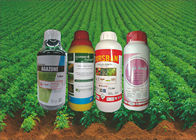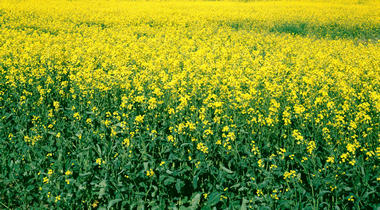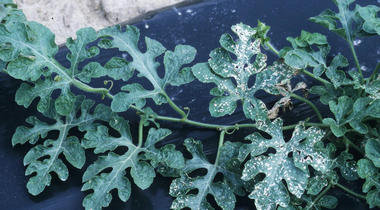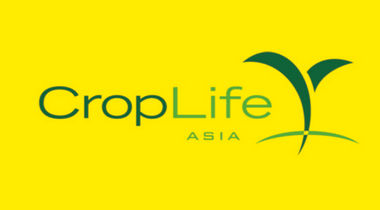- 86-139 8214 2469
- info@landitek.com
Biopesticide active ingredients get policy support for entrance into Chinese market
2021-07-22
China's green pest management area reached nearly 1 billion mu (1 mu = 0.067 hectare) in 2020, with green pest management being applied on 41.5% of major crops to control insect pests and pathogens, which was 18.5% higher than 2015, according to the Ministry of Agriculture and Rural Affairs of China (MOA).
The promotion of biopesticides is imperative for the development of green agriculture. In China, the use of chemical pesticides had maintained a negative growth over the past five years, while the use of biopesticides was on the rise. The promotion of such products is accelerating.
Definition (in China)
• Microbial pesticide: pesticide using living organisms of bacteria, fungi, virus and protozoon or gene-modified microorganism as an active ingredient.
• Botanical pesticide: active ingredients derived directly from plants.
• Biochemical pesticide: meeting both following two requirements: 1) there is no direct toxicity to the target pests, but it regulates growth, disturbs mating or allures pests; 2) natural compound, or the structure is identical to a natural compound in case of a synthesized compound (isomer ratio difference is allowed). It can be semiochemical, a natural plant growth regulator, natural insect growth regulator, natural plant elicitor and other biochemical pesticides.
• Natural enemy pesticide: live organisms (apart from a microbial pesticide) that control pests.
• Agricultural antibiotics: a secondary metabolite with pesticide functions created via a microbial fermentation.
Biopesticide has not been clearly defined in China. However, from a registration policy perspective, the “Data requirement on pesticide registration” makes a separate provision on biopesticides including microbial pesticides, biochemical pesticides and botanical pesticides. Natural enemies are not required to be registered anymore. While agricultural antibiotics and transgenic plants (including embedded plant protectants) are not identified by the national regulations as to their classification as biopesticides. Agricultural antibiotics are often recognized as biopesticides in the industry, while such products are registered following the requirement of chemical pesticides. Genetically modified organisms are subject to the evaluation by the National Agricultural GMO Safety Management Committee in accordance with the “Regulations on the safety control of genetically modified organisms in agriculture”.
Number of biopesticide active ingredients in China and changes in recent years
Some 121 biopesticide active ingredients (agricultural antibiotics included in this counting) are registered in China, accounting for 16.8% of the total pesticide active ingredients. A total of 3,969 biopesticide product registrations were granted (including agricultural antibiotics), accounting for 8% of the total pesticides. Among the biopesticide product registrations, agricultural antibiotics accounted for about 63%.
In recent years, new biopesticide varieties have emerged on the market. From 2017 to 2020, 72 new pesticide active ingredients were being registered in China, of which 31 were biopesticides, accounting for 43%. The proportion of biopesticide active ingredients has increased significantly in recent years.
Although a large number of biopesticide active ingredients have been registered in China (table 1), the production is concentrated in a few product varieties. The most produced five microbial pesticide products are Bacillus thuringiensis (top 1), Bacillus subtilis, Helicoverpa armigera nuclear polyhedrosis virus, Metarhizium anisopliae and Paenibacillus polymyxa, accounting for over 75% of the total microbial products. The most produced five biochemical pesticide products are gibberellic acid, oligosaccharins, brassinolide, triacontanol and 14-hydroxylated brassinosteroid, accounting for about 70% of the total biochemical pesticide products. The top five botanical pesticides are matrine, camphor, rotenone, TDS and triptolide, which account for about 80% of total botanical pesticides.
Table 1. Active ingredients of microbial pesticides, biochemical pesticides, botanical pesticides and agricultural antibiotics registered in China
Category
Microbial pesticide
Bacterium:
Bacillus thuringiensis, Bacillus methylotrophicus strain 9912, Bacillus methylotrophicus strain LW-6, Bacillus marinus, Bacillus firmus, Bacillus sphaericus, Bacillus subtilis, Bacillus cereus, Pseudomonas fluorescens, Paenibacillus polymyxa, Brevibacillus laterosporus strain A60, Empedobacter brevis, Bacillus licheniformis, Bacillus amyloliquefaciens strain B7900, Bacillus amyloliquefaciens strain B1619, Bacillus amyloliquefaciens strain PQ21, Bacillus amyloliquefaciens strain LX-11, Bacillus amyloliquefaciens strain AT-332, Rhodopseudomonas palustris strain PSB-S, Rhodovulum sulfidophilus strain HNI-1, etc.
Fungus:
Metarhizium anisopliae, Beauveria bassiana, Trichoderma harzianum, Paecilomyces lilacinus, Verticillium chlamydosporium, Conidioblous thromboides, Coniothyrium minitans strain ZS-1SB, Conithyrium minitans strain CGMCC8325, Pythium oligadrum
Virus:
1) NPV: Helicoverpa armigera nuclear polyhedrosis virus, Ectropis oblique nuclear polyhedrosis virus, Spotoptera exigua nuclear polyhedrosis virus, Autographa californica nuclear polyhedrosis virus, Spodoptera litura nuclear polyhedrosis virus, Mamestra brassicae nuclear polyhedrosis virus
2) CPV: Dendrolimus punctatus cytoplasmic polyhedrosis virus
3) GV: Pieris rapae granulosis virus, Plutella xylostella granulosis virus, Pseudaletia unipuncta granulosis virus, cockroach virus, Cnaphalocrocis medinalis granulosis virus
Protozoon: Nosema locustae
Gene-edited microorganism: Bacillus thuringiensis strain G033A
Biochemical pesticide
Semiochemical:
Chilo suppressalis sex pheromone, Spodoptera litura sex pheromone, Apolygus lucorum sex pheromone, Grapholitha molesta sex pheromone, Carpocapsa pomonella sex pheromone
Natural plant growth regulator:
Gibberellic acid, Gibberellic acid A4+A7, heteroauxin, indolebutyric acid, enadenine, oxyenadenine, benayl aminopurine, 24-epbrassinolide, 14-hydroxylated brassinosteroid, triacontanol, abscisic acid, ascorbic acid, kinetin, iron chlorine e6, allantoin, etc.
Natural insect growth regulator: (Z)-9-Tricosene, (S)-Methoprene
Naturalplant elicitor: Harpin protein, plant activator protein, oligosaccharins, lentinan, chitosan, oligosaccharide, mixed fatty acids, etc.
Other: Cholecal ciferol
Botanical pesticide
Matrine, camphor, rotenone, azadirachtin, veratramine, pyrethrin, nicotine, celastrus angulatus, eucalyptol, star anise oil, chamaejasmine, triptolide, curcumenol, cnidium lactone, eugenol, physcion, carvacrol, berberine, androstanol, tea saponin, TDS, allicin, d-Limonene, terpene alcohol, allyl isothiocyanide, ginkgo seed extract, Fructus psoraleae seed extract, Banda de Lupinus albus doce
Agricultural antibiotics
Insecticide: Abamectin, spinosad, ivermectin
Rodenticide: Botulinkum type D, botulinkum type C
Bactericide and fungicide: Validamycin, kasugamycin, polyoxins, pyrimidine nucleotide bacteriophage, ningnanmycin, Phenazino-1-carboxylic acid, Zhongshengmycin, tetramycin
The promotion of biopesticides is imperative for the development of green agriculture. In China, the use of chemical pesticides had maintained a negative growth over the past five years, while the use of biopesticides was on the rise. The promotion of such products is accelerating.
Definition (in China)
• Microbial pesticide: pesticide using living organisms of bacteria, fungi, virus and protozoon or gene-modified microorganism as an active ingredient.
• Botanical pesticide: active ingredients derived directly from plants.
• Biochemical pesticide: meeting both following two requirements: 1) there is no direct toxicity to the target pests, but it regulates growth, disturbs mating or allures pests; 2) natural compound, or the structure is identical to a natural compound in case of a synthesized compound (isomer ratio difference is allowed). It can be semiochemical, a natural plant growth regulator, natural insect growth regulator, natural plant elicitor and other biochemical pesticides.
• Natural enemy pesticide: live organisms (apart from a microbial pesticide) that control pests.
• Agricultural antibiotics: a secondary metabolite with pesticide functions created via a microbial fermentation.
Biopesticide has not been clearly defined in China. However, from a registration policy perspective, the “Data requirement on pesticide registration” makes a separate provision on biopesticides including microbial pesticides, biochemical pesticides and botanical pesticides. Natural enemies are not required to be registered anymore. While agricultural antibiotics and transgenic plants (including embedded plant protectants) are not identified by the national regulations as to their classification as biopesticides. Agricultural antibiotics are often recognized as biopesticides in the industry, while such products are registered following the requirement of chemical pesticides. Genetically modified organisms are subject to the evaluation by the National Agricultural GMO Safety Management Committee in accordance with the “Regulations on the safety control of genetically modified organisms in agriculture”.
Number of biopesticide active ingredients in China and changes in recent years
Some 121 biopesticide active ingredients (agricultural antibiotics included in this counting) are registered in China, accounting for 16.8% of the total pesticide active ingredients. A total of 3,969 biopesticide product registrations were granted (including agricultural antibiotics), accounting for 8% of the total pesticides. Among the biopesticide product registrations, agricultural antibiotics accounted for about 63%.
In recent years, new biopesticide varieties have emerged on the market. From 2017 to 2020, 72 new pesticide active ingredients were being registered in China, of which 31 were biopesticides, accounting for 43%. The proportion of biopesticide active ingredients has increased significantly in recent years.
Although a large number of biopesticide active ingredients have been registered in China (table 1), the production is concentrated in a few product varieties. The most produced five microbial pesticide products are Bacillus thuringiensis (top 1), Bacillus subtilis, Helicoverpa armigera nuclear polyhedrosis virus, Metarhizium anisopliae and Paenibacillus polymyxa, accounting for over 75% of the total microbial products. The most produced five biochemical pesticide products are gibberellic acid, oligosaccharins, brassinolide, triacontanol and 14-hydroxylated brassinosteroid, accounting for about 70% of the total biochemical pesticide products. The top five botanical pesticides are matrine, camphor, rotenone, TDS and triptolide, which account for about 80% of total botanical pesticides.
Table 1. Active ingredients of microbial pesticides, biochemical pesticides, botanical pesticides and agricultural antibiotics registered in China
Category
Microbial pesticide
Bacterium:
Bacillus thuringiensis, Bacillus methylotrophicus strain 9912, Bacillus methylotrophicus strain LW-6, Bacillus marinus, Bacillus firmus, Bacillus sphaericus, Bacillus subtilis, Bacillus cereus, Pseudomonas fluorescens, Paenibacillus polymyxa, Brevibacillus laterosporus strain A60, Empedobacter brevis, Bacillus licheniformis, Bacillus amyloliquefaciens strain B7900, Bacillus amyloliquefaciens strain B1619, Bacillus amyloliquefaciens strain PQ21, Bacillus amyloliquefaciens strain LX-11, Bacillus amyloliquefaciens strain AT-332, Rhodopseudomonas palustris strain PSB-S, Rhodovulum sulfidophilus strain HNI-1, etc.
Fungus:
Metarhizium anisopliae, Beauveria bassiana, Trichoderma harzianum, Paecilomyces lilacinus, Verticillium chlamydosporium, Conidioblous thromboides, Coniothyrium minitans strain ZS-1SB, Conithyrium minitans strain CGMCC8325, Pythium oligadrum
Virus:
1) NPV: Helicoverpa armigera nuclear polyhedrosis virus, Ectropis oblique nuclear polyhedrosis virus, Spotoptera exigua nuclear polyhedrosis virus, Autographa californica nuclear polyhedrosis virus, Spodoptera litura nuclear polyhedrosis virus, Mamestra brassicae nuclear polyhedrosis virus
2) CPV: Dendrolimus punctatus cytoplasmic polyhedrosis virus
3) GV: Pieris rapae granulosis virus, Plutella xylostella granulosis virus, Pseudaletia unipuncta granulosis virus, cockroach virus, Cnaphalocrocis medinalis granulosis virus
Protozoon: Nosema locustae
Gene-edited microorganism: Bacillus thuringiensis strain G033A
Biochemical pesticide
Semiochemical:
Chilo suppressalis sex pheromone, Spodoptera litura sex pheromone, Apolygus lucorum sex pheromone, Grapholitha molesta sex pheromone, Carpocapsa pomonella sex pheromone
Natural plant growth regulator:
Gibberellic acid, Gibberellic acid A4+A7, heteroauxin, indolebutyric acid, enadenine, oxyenadenine, benayl aminopurine, 24-epbrassinolide, 14-hydroxylated brassinosteroid, triacontanol, abscisic acid, ascorbic acid, kinetin, iron chlorine e6, allantoin, etc.
Natural insect growth regulator: (Z)-9-Tricosene, (S)-Methoprene
Naturalplant elicitor: Harpin protein, plant activator protein, oligosaccharins, lentinan, chitosan, oligosaccharide, mixed fatty acids, etc.
Other: Cholecal ciferol
Botanical pesticide
Matrine, camphor, rotenone, azadirachtin, veratramine, pyrethrin, nicotine, celastrus angulatus, eucalyptol, star anise oil, chamaejasmine, triptolide, curcumenol, cnidium lactone, eugenol, physcion, carvacrol, berberine, androstanol, tea saponin, TDS, allicin, d-Limonene, terpene alcohol, allyl isothiocyanide, ginkgo seed extract, Fructus psoraleae seed extract, Banda de Lupinus albus doce
Agricultural antibiotics
Insecticide: Abamectin, spinosad, ivermectin
Rodenticide: Botulinkum type D, botulinkum type C
Bactericide and fungicide: Validamycin, kasugamycin, polyoxins, pyrimidine nucleotide bacteriophage, ningnanmycin, Phenazino-1-carboxylic acid, Zhongshengmycin, tetramycin
-
Dhanuka launches herbicide TORNADO
2021-08-04






(1).jpg)



.jpg)